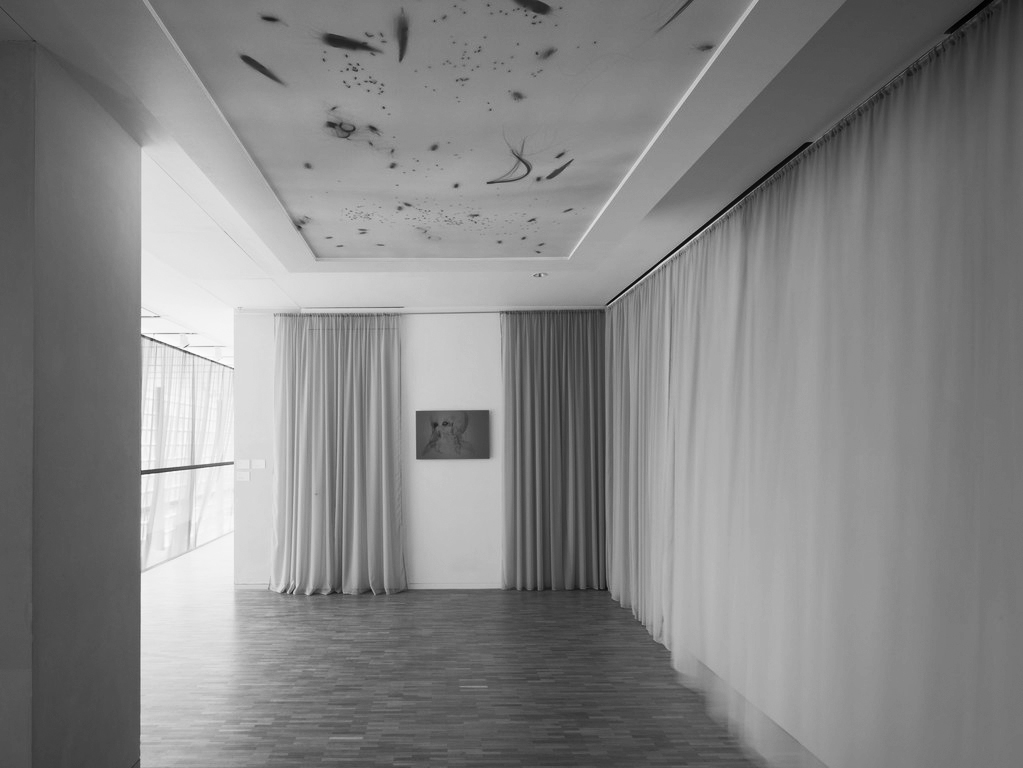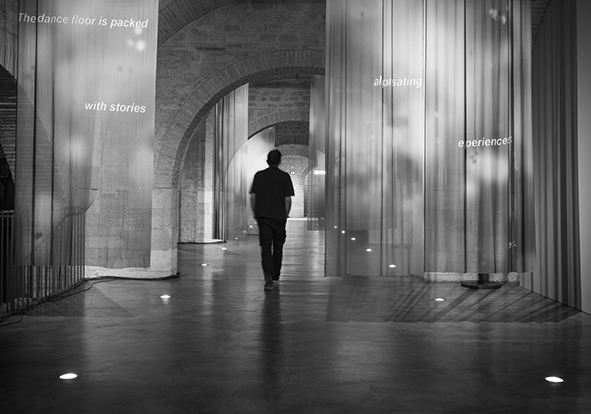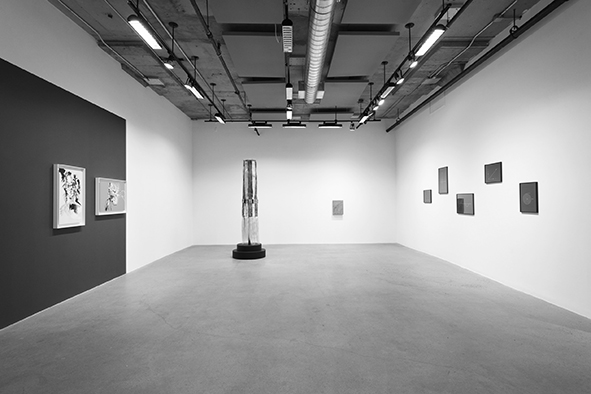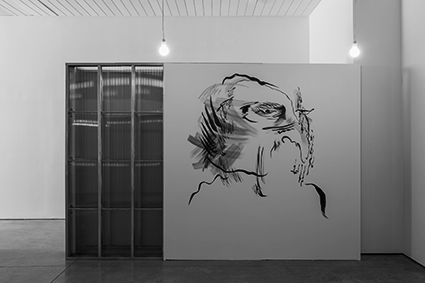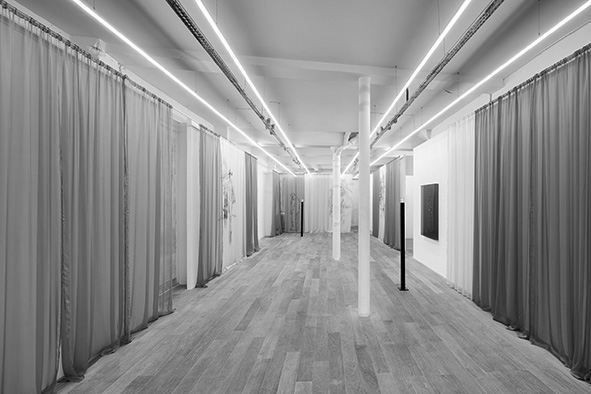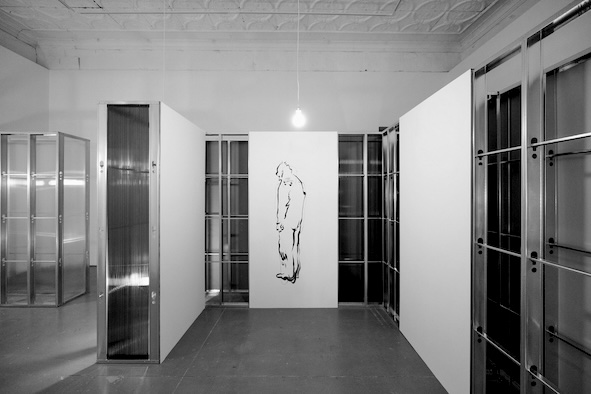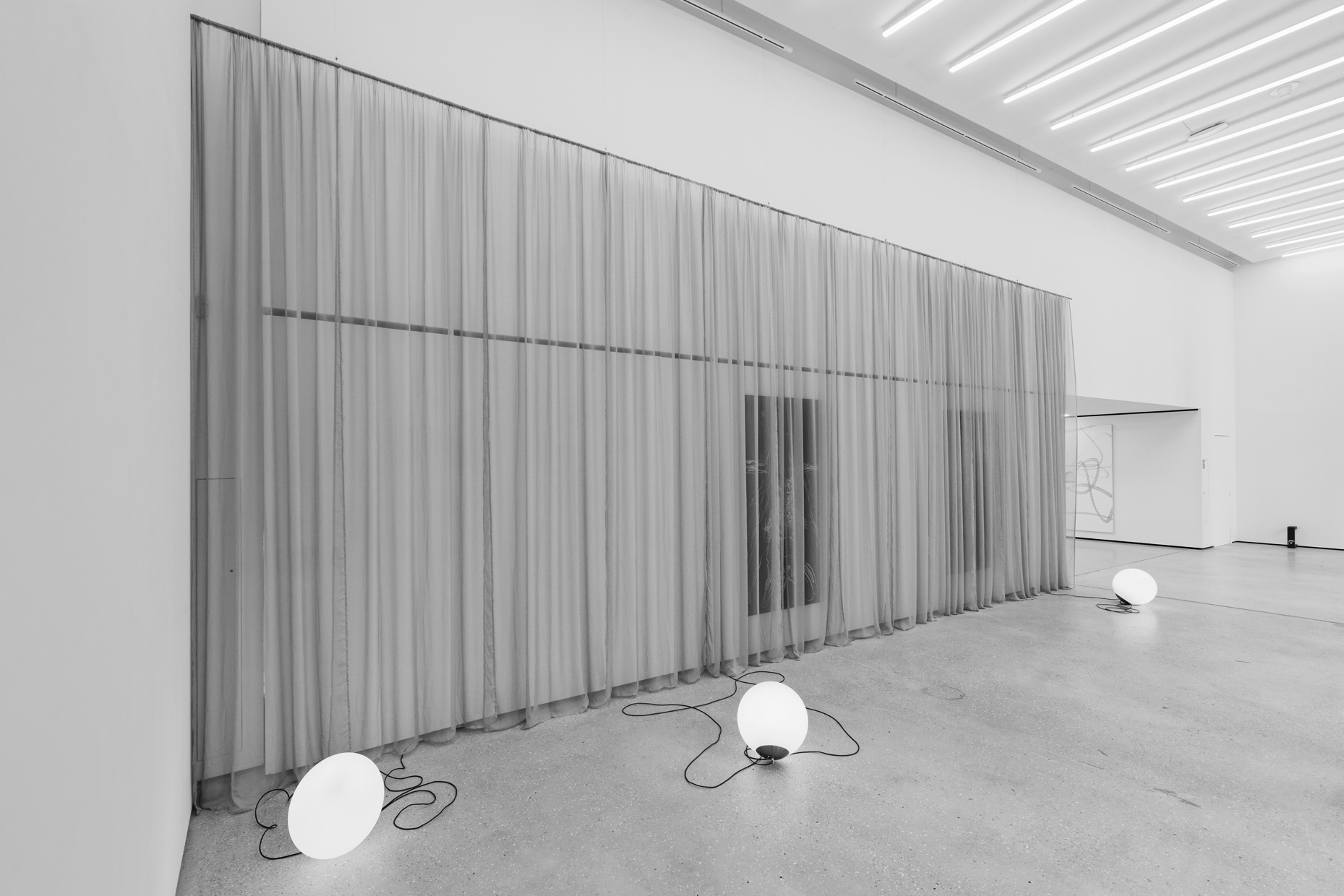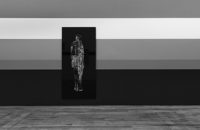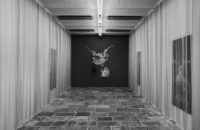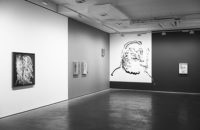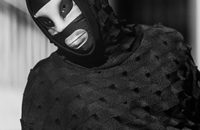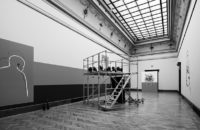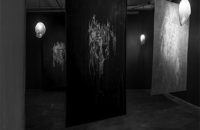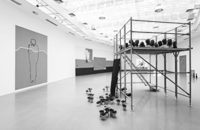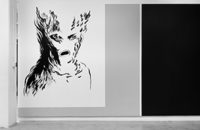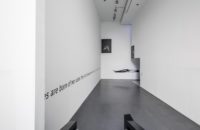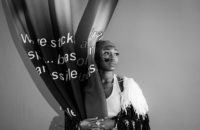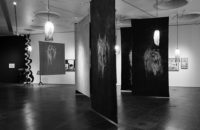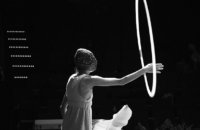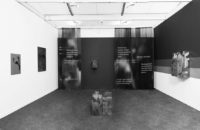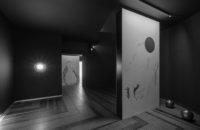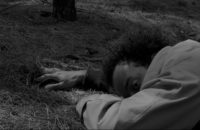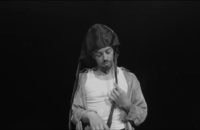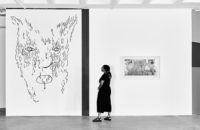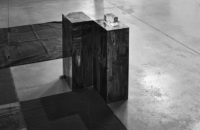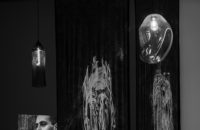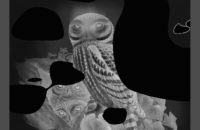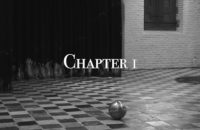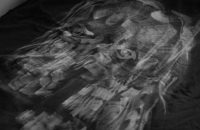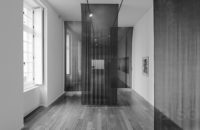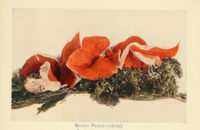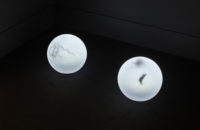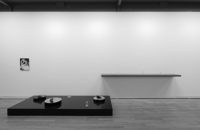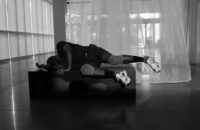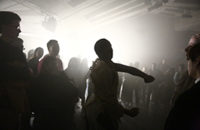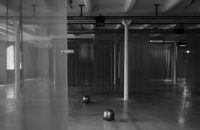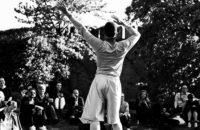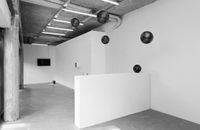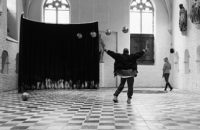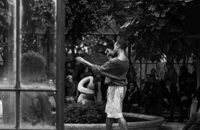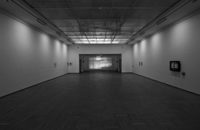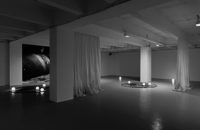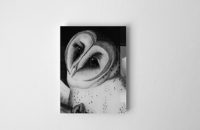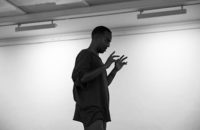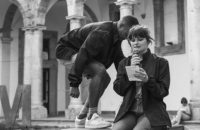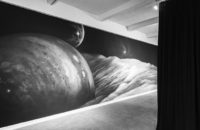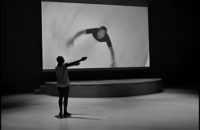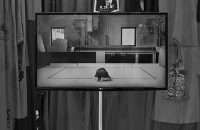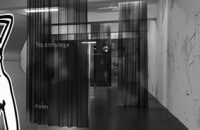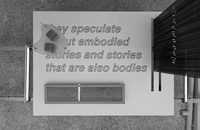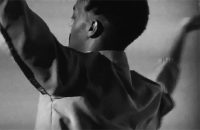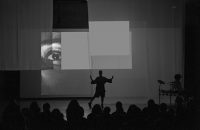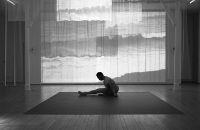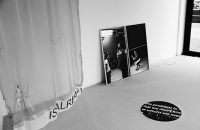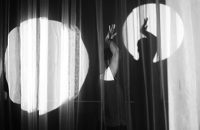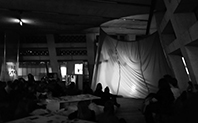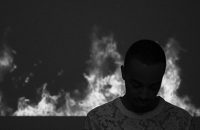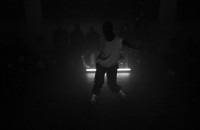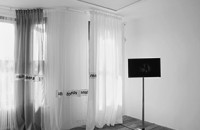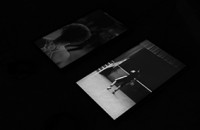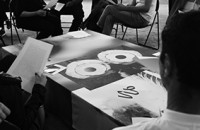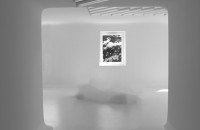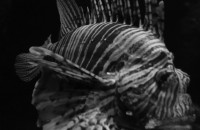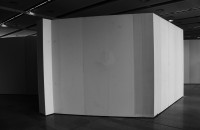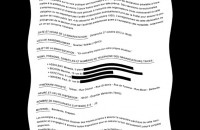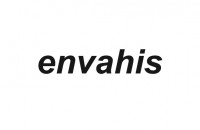Paul Maheke enters the large auditorium of Santander’s cultural institution Botín Center casually, feet shuffling lightly along the floor against the backdrop of a trance-like soundtrack. Dressed only in boxer briefs, a white tank top and socks, the London-based artist feels out the space, moving between bodies in the audience and the stage area. Presented on April 17 as part of the Body Ecologies programme put together by Santander’s independent art space fluent, Maheke’s performance ‘A familiar familial place of confusion (Channel)’ (2018) follows one by Mary Hurrell on January 30, closing with another by Louisa Martin on May 26. The three-part series is the research project of curator Alejandro Alonso Diaz whose “conclusions appear in the form of experiences, gestures, intuitions and emotions, rather than via words and concepts.”
Diaz notes the research opts toward embodied experience and sensorial thinking to track the “changing ways our bodies work, breathe, dream and interact.” Looking at performance for its potential to “transcend the use of language,” movement, gesture and ambience become vehicles to explore limit, potential, and transformation in relation to human identity and perception.
Maheke’s performance, which runs in conversation with current solo exhibition A fire circle for a public hearing at London’s Chisenhale, mutates seamlessly between layers of fragmented choreography. From small facial expressions and performative tropes to Michael Jackson references and bodybuilding poses, gestures form and fall away like stray thoughts. In what feels like a prelude, the pace of movement remains a constant throughout but the atmosphere gradually intensifies. Large curtains slowly come down, the space darkens. A large projected video takes centre stage. Spinning footage of the artist dancing in their studio creates a dizzying, centrifugal effect. Through image, sound and body, the viewer enters an atmosphere of physiological experience that seeks to communicate without representation.
The attempt to move past language is the attempt to move into new paradigms — how do we free ourselves from words, from the fabric that formed them? How do we purge ourselves from its inherent violence, or, as Diaz notes, “reshift into a new planetary choreography to rearticulate these logics, which range from our daily unconscious gestures to the migration of species”? In a conversation that attempts to unpick some of these questions, Maheke expands on the multiple narratives that emerge and intersect within a body — where archive, memory, marginalised identities and the colonial body reappear like ghosts.
**There are so many elements going on in your work, not just through the layering of sound, video and performance, but also the references. Can we start by talking about your process?
Paul Maheke: I often describe my practice as a magma, it’s kind of solid at times and liquid at other times — it’s always layers that are accumulating throughout time, and so I always have the feeling that I’m moving forward bit by bit, somehow. One thing helps me to do another thing, so I like to think of the exhibitions and performances as moments of research, as well.
I’m interested in tropes, representations and cliches, and how to re-digest them. For example, I’m not interested in using cliches per say, but if I am to use them, they need to be filtered for them to become interesting. So it’s very much about digestion and the rendition of that – how does movement transform in the space (that is my body) and how can two ppl meet in my body and what does that create.
** Like you’re channelling something?
PM: Exactly, everything happening really quickly. But there is a lot of research of course in the sense that my work is very much influenced by a lot of things such as feminisms and writing and poetry…
**: Are there people in specific you keep coming back to?
PM: I usually say Michael Jackson is the reason why I’m dancing, and Felix Gonzalez-Torres is the reason I keep making art. So those two are very important for me, that’s why in the Chisenhale show there are references to both of them.
I’m very absorbent. I’m really interested in putting together things that are not necessarily obvious together. It’s a lot of things colliding and I’m interested in the tensions between them and even the conflicts or contradictions. For example, for this performance, there is this idea of jumping in and out of a person all the time, almost as if possessed by some spirits.
**Yes! You look like you’re under a spell when you’re performing…
PM: Especially for that one because there’s all those facial expressions, but it was interesting to see how various movements could come together in a single narrative, and this is often what I’m doing with text or in my videos – trying to put together things that were not and making them as seamless as possible.
**It seems like all these movements travel around the periphery of something, like it’s about what’s being left out and what’s not there. Or this moment of the rehearsal or the before or after, rather than the performance itself.
PM: Yeah totally – for example, with Michael Jackson, I’ve been looking at videos of him rehearsing because I was interested in that kind of underperformed quality. I’m always interested in what’s left untold and unseen, and there’s something quite poetic about the rehearsal — this kind of repetition of movement almost as if stuttering, of rendering them with an uncertainty, something that is not quite so clear. There’s a lot of movements that are starting but not really finishing and then transitioning to something else.
**Yeah, those ‘not yet’ moments make you feel like your watching something very intimate happen, or you’re thinking about the space around you somehow. Or maybe a memory, what once was and is now just an afterthought…
PM: When I speak about the work, often I’ve been using the word ‘ghost’ to describe it, even the references or the people that surround my practice, or have been influential for it to flourish – about channeling some others.
**Yeah, I want to talk about these ghosts, but first, in relation to channeling, does your process feel somewhat outside of your control or that it’s open other forces somehow ‘making the decisions’?
PM: It’s a mixture I think, for example the show at Chisenhale, I really have the feeling that the work preceded me, in the sense that I wasn’t able to see the full dimension of the work and how important that was for me, up until the moment it was done and performed by other people, somehow. I had the same thing with my first video, when everything seems to click without me really being part of that process, so I guess there is almost a magical element. It sounds really romantic and cheesy.
**Not to me. Especially the way you explore a non-linear sense of time — this seems like an essential thing to tap into.
PM: Yeah, totally, linearity for me always speaks from a place of violence. I cannot think of anything else but violence when I’m thinking of it. And of erasure, as well.
**Could you talk about the relationship between nonlinear time and erasure and in your work, and how it relates to circularity which seems a strong component of your practice?
PM: I’m really interested in the idea of circularity and this non-aggressive way of occupying a territory. For example, the way nomadic people use a circle of patterns to not wear out the soil, or not wear out the resources where they are living. But there is also this thing of the way linearity speaks of the western mind and how things are meant to make sense and they never made sense for me (even though I’m a western person). I think it has to do with queerness, as well, where my understanding of the world is very much a layering. Things are happening simultaneously and they can speak to each other, or not, and they may or may not encounter even, but it’s way more messy than that and I’m interested in that kind of confusion of power. The work is about that somehow. For example, the video, sound and dancing are following three parallel lines and they are encountering at times, and branching off, and that’s where that in-between is and where the work resides.
And in terms of time — again back to this project at Chisenhale — it was also one of those things, like what would be a queer, black understanding of time, for example. That’s when I started to think back to Michael Jackson and also the vogue ballroom scene, where everything is happening at the same time on the sides, in the centre, in the middle, above, underneath. For me, it’s almost a counter-example to the white cube and to this thing of having to isolate something in order to value it and to understand that it’s valued. The vogue ballroom scene is the opposite; the fact that everything is happening simultaneously makes the thing interesting. I think, for me, that was as close to an understanding of space and time according to queerness and blackness.
**You can really feel that complex layering in your work — but also moments of push and pull that work against each other — I guess I’m referring to the way your work occupies both a space of freedom and movement, as well as stasis and limitation.
PM: For this piece, I think there are clear references to that; to the impossibility of escaping masculinity because of the way my body looks. What was really hard for me in this work was not to fall into that trap of binaries — like masculine or feminine — but finding something that would be a bit more uncanny or unsettling.
**Yeah, I was really feeling those socks;
PM: If I were to remove the socks, then I would just be a typical contemporary dancer. There’s something a bit comical about them, about the work, as well, in the movement that I’m doing. I felt this vulnerability at the beginning because it’s very rare that I show my body in my performances and so this was somehow very revealing for me. So the first moment when I’m just walking around in full light was very, oof, I felt very self conscious somehow.
**As well as the way the ‘beginning’ of it started, very casually, warming up and the audience was staring in anticipation or confusion.
PM: I like to work around those moments, the transition of what’s considered a performance and what’s not. The photographer only started to photograph me once the light was down, when, for me, the prelude is totally part of the performance – those kind of liminal spaces, or in between spaces, I’m really interested in. The socks are not necessarily speaking to that but there is a little bit of how to bring the domestic into the space, which is an art venue, and how to bring in the mundane.
**There is a nice relationship between your choreography and the other elements, which felt enormous in comparison — the space, the lighting and also the circulating video. Somewhere between the simple and the spectacle…
PM: I’m often using very simple means. With the video I started to experiment with movement in the studio and I placed a camera on the fan that was just above me, and I started to dance. Very DIY, very simple. That’s often what I’m doing. I see it almost as a timer. It’s an ever-present thing that is there in the space circulating, gravitating. As well, there were a lot of ideas around cosmology and this kind of broader understanding of the world, and of existence and humanity. Somehow very pretentious and ambitious, these kind of connections between the domestic and the cosmic, but yeah the spinning video there were big ideas to take on board.
**All these elements existing within one fractal almost. I remember when I first encount ered your work, you spoke about a lot of these ideas (the cosmic, the formless) in relation to water and hydrofeminism.
PM: Hydrofeminism is a text I bumped into, now almost two years ago, when I was trying to think about how to unlearn resistance as opposition. Resistance has always been present in my work as a position from which to speak from, but how to avoid exhausting yourself and on a personal level, thinking about desire. It was connected to a lot of things.
I realised that I was working with those moments of resistance but I was hitting a wall that was way too hard for me. So how to not exhaust yourself, or to burn yourself out and still feel resilient and resistant. When I started to think about water, a friend of mine, Sophie Mallet, gave me that text and it all made sense. The approach of hydrofeminist is both mythological but also very political and embedded in a lot of thinking around geographies and around identity at large. Often I’m interested in how I can escape, how to think of identity outside of identity politics, and it’s representational tropes. I think water helped me to do that and to abstract a little bit more.
Water was also connected to this idea of formlessness, and formlessness now is kind of back in my work through the figure of the ghost.
**Yes, let’s talk about the ghost(s). Have there been any defining moments in your life with ghosts?
PM: When I was a kid, I was obsessed with ghosts. Every Wednesday, I would go to the library and look at pictures of ghosts but then I became super scared. I couldn’t hear anything about ghosts up until I was maybe 15 [years old]. When I was 26, I met this psychic woman and she told me, ‘Paul, you have something.’ She told me that I’ve been past on something and that I should acknowledge it because it’s there. Then shortly after that I had my first ghost experience, which was very acute, where I started to see people in my room.
It intensified when I moved to London, and I think I was living in a haunted house. I mean full of ghosts — really. I would have those presences come at night and it was a little bit scary, not nice.
During my residency this year at Altos de Chavon in Dominican Republic, we were told loads of ghost stories. The site is built on former territories and sanctuaries of the Taino indigenous population, who were exterminated by colonization. I met with a medium there who told me I have an untrained psychic energy that I should use because it’s as if I was in denial — as if I was denying the teeth in my mouth. But it’s still something that frightens me.
Also this is telling me that everything is still here, nothing disappeared, and it’s embodied in us and it’s in the wall of our architectures, its like everywhere; this erasure.
**God, the ghost as a metaphor for erasure. But it’s more than a metaphor…
PM: It’s everything. The ghost is everything and nothing. It may or may not appear; may appear to some people and not to others, occupies different dimensions, different beliefs, and is a figure of the past, the present and the future. There’s a blurring in time, kind of like this thing of removing myself more and more from the representational and letting nonhuman forms of life speak to our subjectivity and our bodies, somehow. what it means to have an existence that doesn’t exist in the visible realm, or in the realm of the visible. How this speaks to the absence and presence of black and brown narratives, marginalized narratives throughout western history.**
A conversation with Paul Maheke on erasure, ghosts and channeling the space between by Human Poney for AQNB
